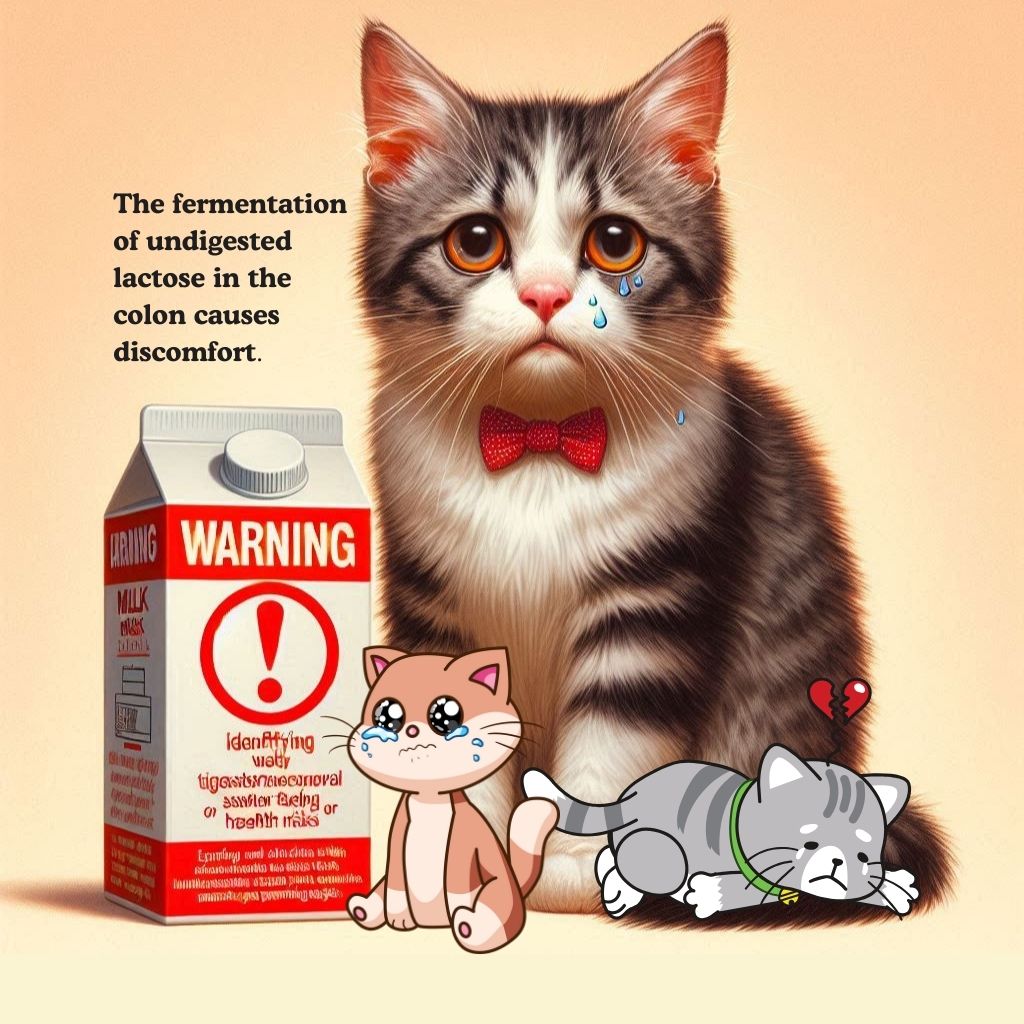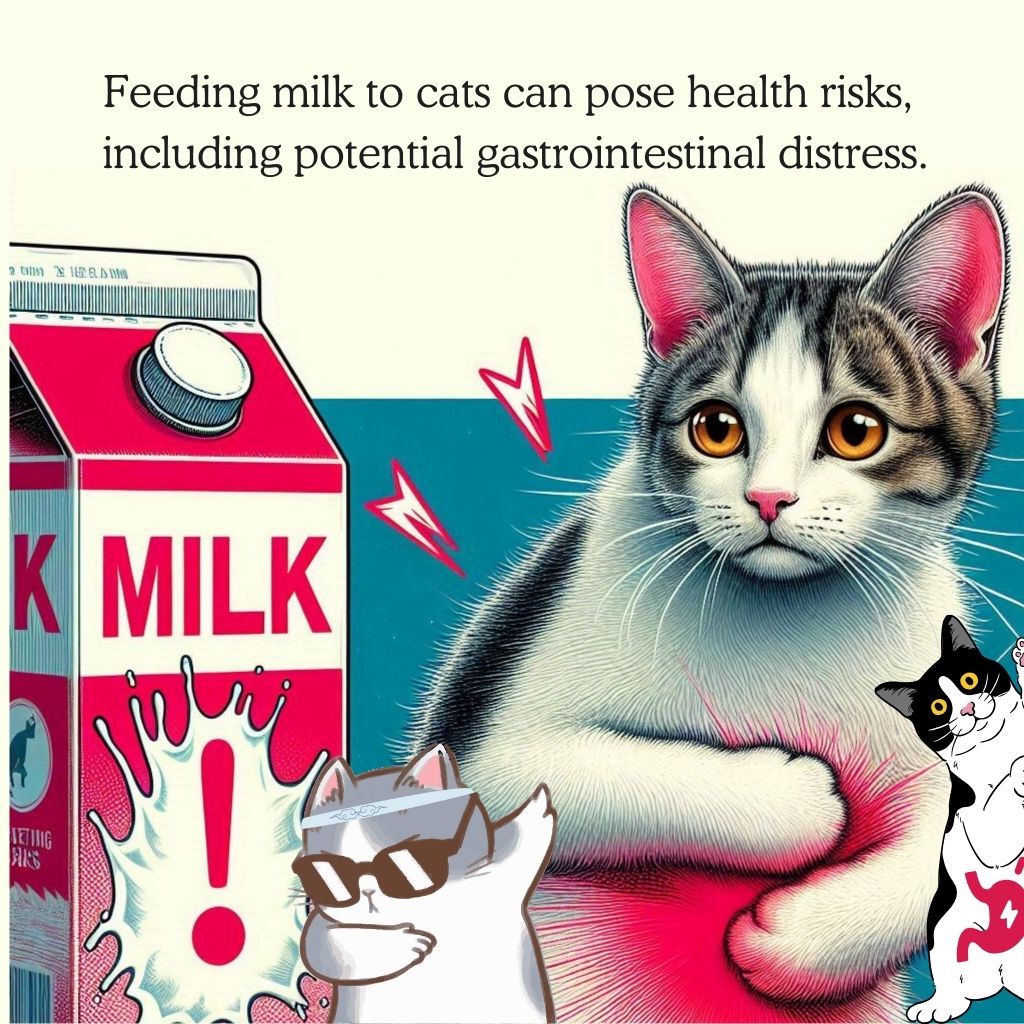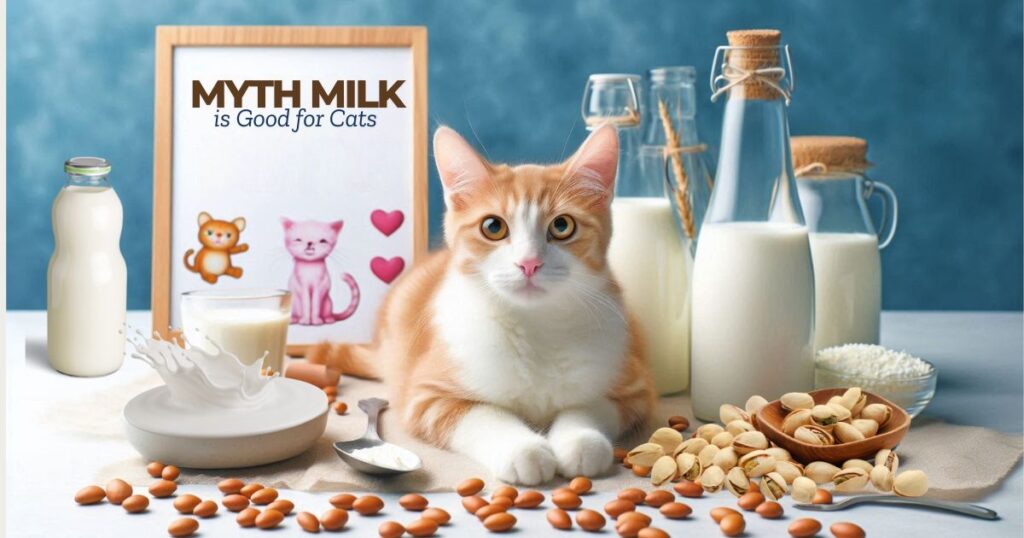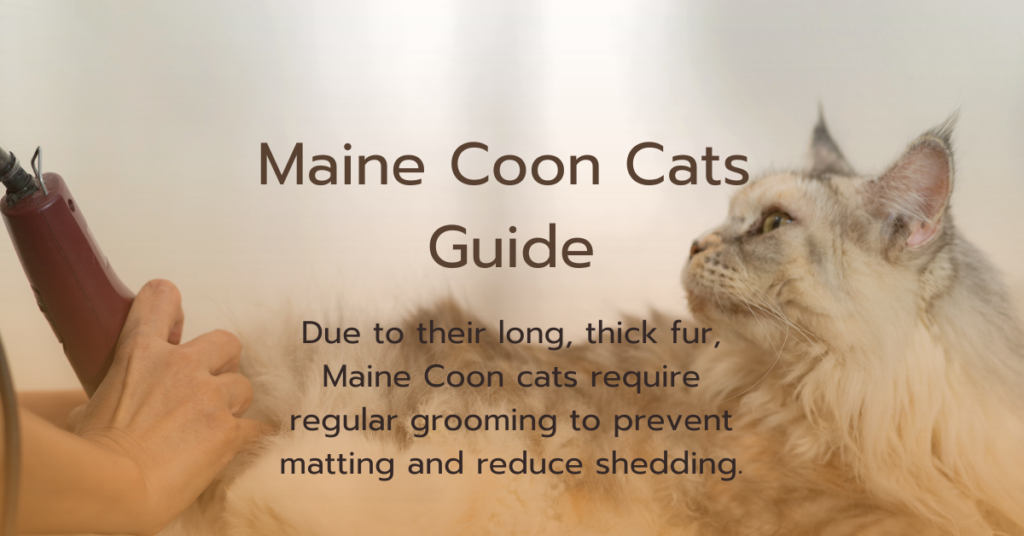Contents
Introduction
Myth Milk: In this comprehensive article, we explore the longstanding myth that milk is good for cats, providing an in-depth analysis based on current veterinary research and expert nutritional guidelines.
The idea that milk is natural and healthy for cats has been passed down for generations, but modern science tells a different story.
In this article, we will examine the role of lactose intolerance in cats, analyze how milk impacts feline health and diet, highlight the potential dangers of feeding milk to cats, and explore safe dairy alternatives that can be offered as a treat.
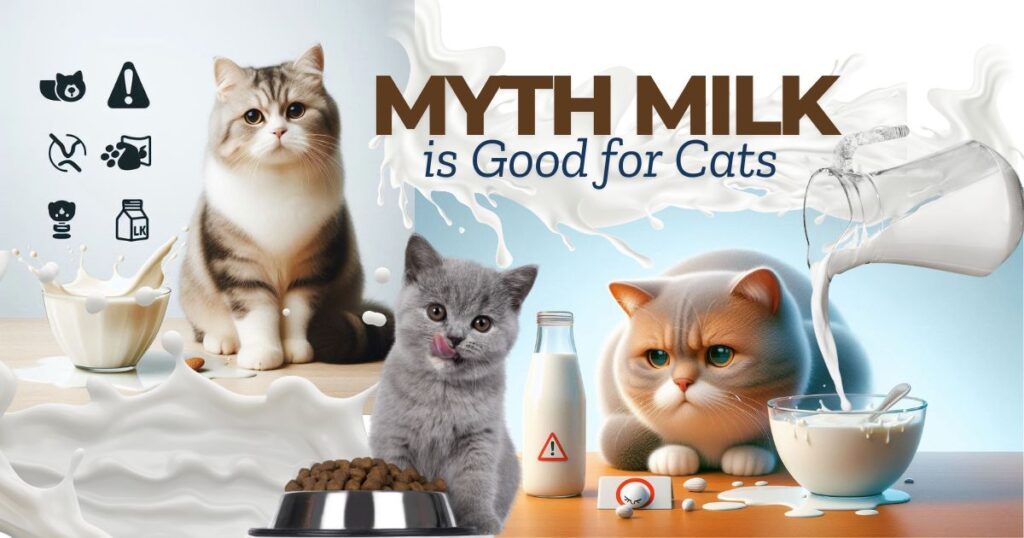
Understanding Lactose Intolerance in Cats:
Debunking the Milk Myth
Cats are obligate carnivores
Their digestive systems are uniquely designed to process proteins and fats from animal sources, not dairy. The myth that milk is a beneficial drink for cats likely stems from historical observations of kittens nursing from their mothers; however, as cats grow, many lose the enzyme lactase that is necessary to break down the lactose found in milk.
Lactose intolerance in cats occurs when levels of the lactase enzyme needed to digest lactose decline as the cat ages, causing it to be unable to properly digest dairy products and feel uncomfortable in the digestive system.
Veterinarians explain
While kittens produce sufficient lactase during their early development, most cats experience a natural decline in lactase production as they mature, leading to digestive issues when exposed to milk.
Studies have shown that a significant number of domestic cats exhibit signs of lactose intolerance, such as diarrhea, abdominal cramps, and bloating when given milk or milk-based products
The biochemical mechanisms
We will delve into the biochemical mechanisms behind lactose intolerance in cats, discussing how the deficiency of lactase leads to the fermentation of undigested lactose in the colon, resulting in gastrointestinal discomfort.
We will also explore the evolutionary aspects of feline digestion, comparing the dietary needs of wild cats versus domestic cats, and why milk is not an essential component of an adult cat’s diet.
By understanding the physiological reasons behind lactose intolerance, cat owners can better appreciate why the traditional image of a cat happily lapping up a saucer of milk is misleading and potentially harmful.
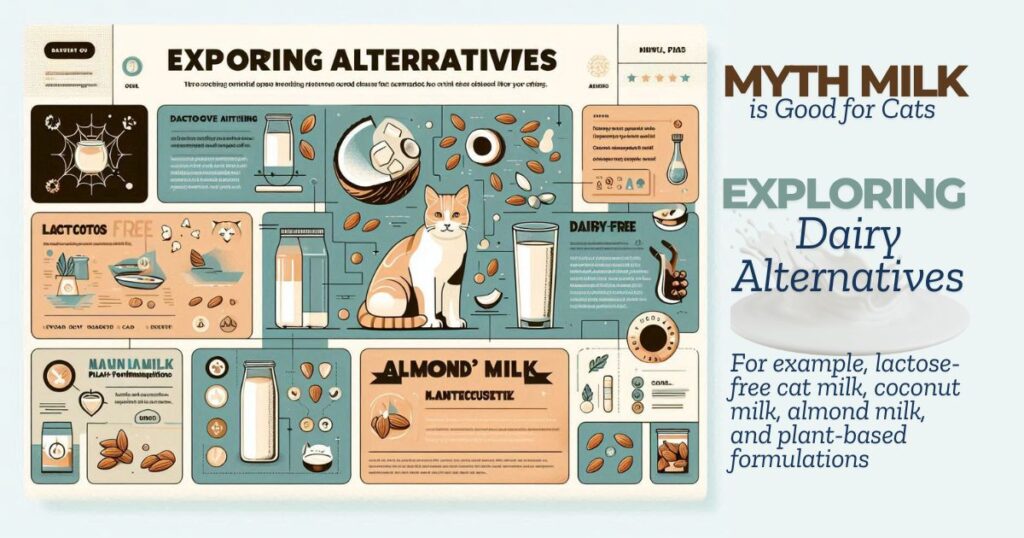
The text discusses the benefits of using dairy alternatives for cats, highlighting their ability to avoid lactose and provide essential nutrients. It also addresses potential concerns like flavor preferences and how to introduce new products gradually to avoid digestive upset. Case studies from pet nutrition experts illustrate successful transitions and enhancements in digestive health and overall well-being.
This section underscores the importance of recognizing that not all dietary habits depicted in popular culture are beneficial, and that science-based evidence should guide nutritional choices for pets.
Nutritional Analysis:
How Milk Impacts Feline Health and Diet
Nutritional analysis
We conduct a detailed nutritional analysis of milk and its effects on feline health and diet, providing a balanced overview of its composition and potential drawbacks. Milk is composed primarily of lactose, fats, proteins, and various micronutrients; however, the nutritional profile of milk is tailored for the growth and development of young mammals, not adult cats.
The protein content in milk, though beneficial for growth, may be insufficient or imbalanced when compared to the high-protein diets that are ideal for cats, whose nutritional needs differ significantly from those of human infants.
A key point of discussion
The discussion is about the high lactose content in milk, which can cause digestive upset in lactose-intolerant cats, leading to symptoms such as diarrhea and dehydration that can have cascading effects on overall health.
Furthermore, the fat content in milk, while providing energy, may also contribute to weight gain and obesity if consumed in large quantities, especially when combined with a sedentary lifestyle common in indoor cats.
We will compare the macronutrient profile of milk to that of a balanced feline diet, emphasizing the importance of animal proteins and the potential risks of introducing dairy into a cat’s meal plan.
In addition to macronutrients, milk contains vitamins and minerals such as calcium and vitamin D; however, the bioavailability of these nutrients in milk does not necessarily align with the unique metabolic requirements of cats.
Recent nutritional studies
These have shown that cats require a diet that is high in taurine, an amino acid that is scarcely found in milk, and essential for maintaining healthy vision, heart function, and overall well-being. The section will include graphs and charts comparing the nutrient composition of milk versus specialized cat foods, highlighting the discrepancies and potential health risks.
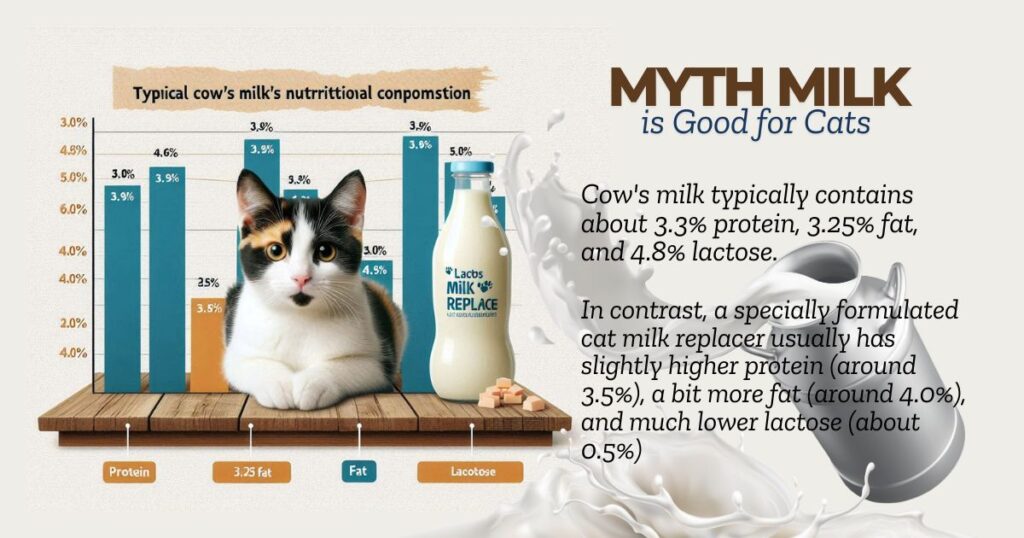
Integrating scientific data
This section explains that milk doesn’t meet cat’s dietary needs, despite its perceived benefits. It provides practical feeding recommendations and case studies from pet nutrition experts, highlighting how dietary changes away from milk have improved energy levels, coat condition, and overall vitality in cats.
Identifying Health Risks:
The Dangers of Feeding Milk to Cats.
The image of a cat happily lapping milk in popular culture is romanticized, but feeding milk to cats can lead to health risks. Gastrointestinal distress, diarrhea, vomiting, and abdominal pain can occur due to ingestion of lactose that cats cannot digest. Undigested lactose fermentation in the colon can cause dehydration and electrolyte imbalances.
In some cases, repeated exposure to milk may exacerbate these issues, leading to chronic digestive disturbances that can affect a cat’s overall quality of life. Moreover, cats with pre-existing conditions such as inflammatory bowel disease or irritable bowel syndrome are particularly vulnerable to the adverse effects of milk consumption.
Explore the scientific
The scientific evidence linking milk consumption with negative health outcomes in cats, drawing from clinical studies and veterinary reports. Detailed explanations will be provided on how lactose intolerance can compromise the digestive system, leading to long-term health issues if not managed appropriately.
We will also discuss the potential for allergic reactions to dairy proteins, which, although less common, can result in skin irritations and other immune-mediated responses in certain cats. The section will highlight statistics and findings from veterinary research that underscore the frequency and severity of adverse reactions observed in cats fed with milk.
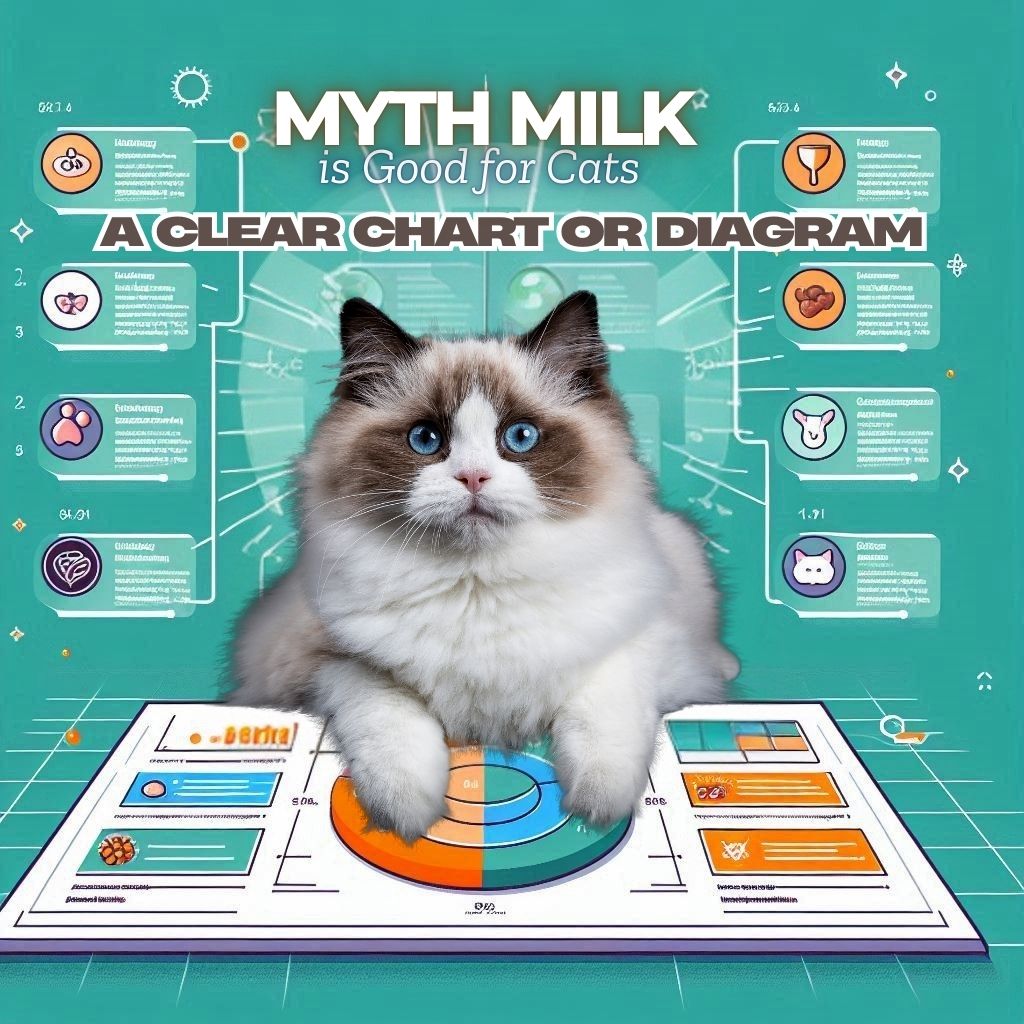
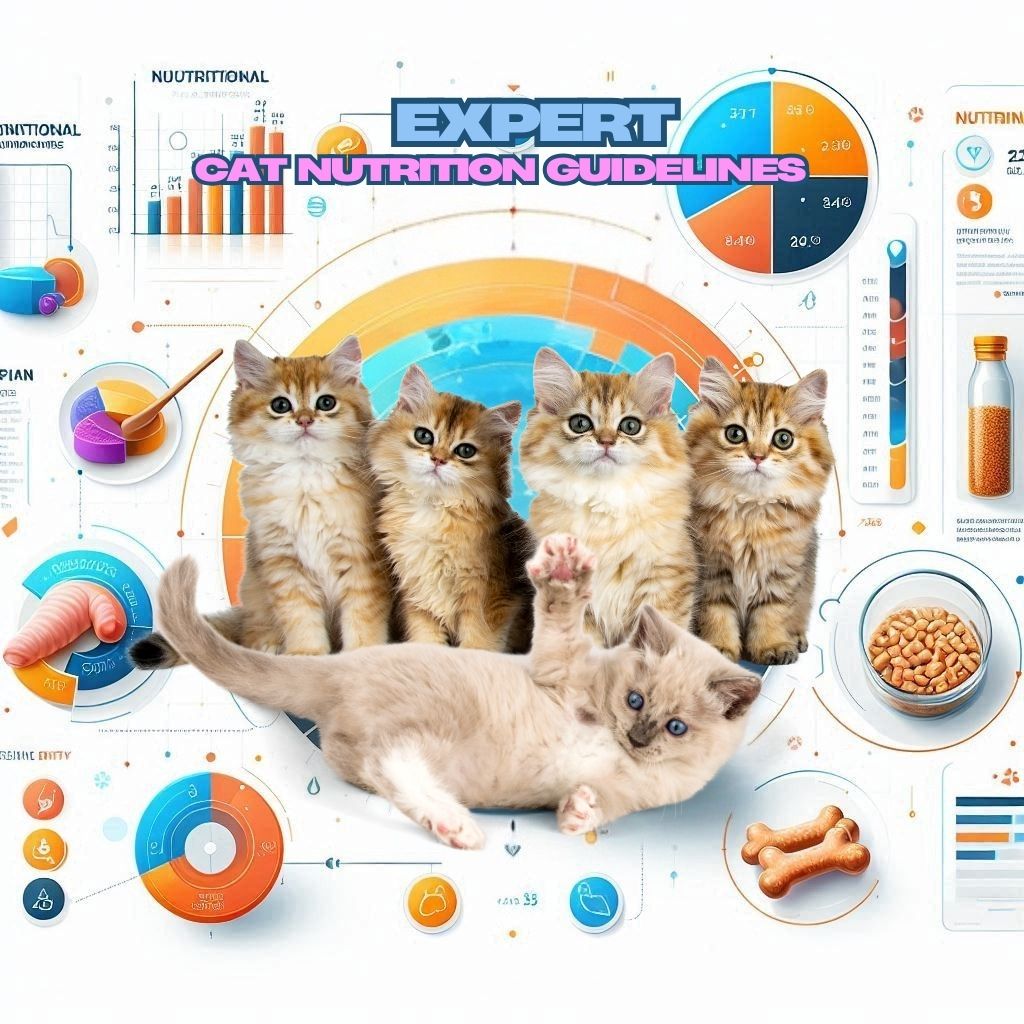
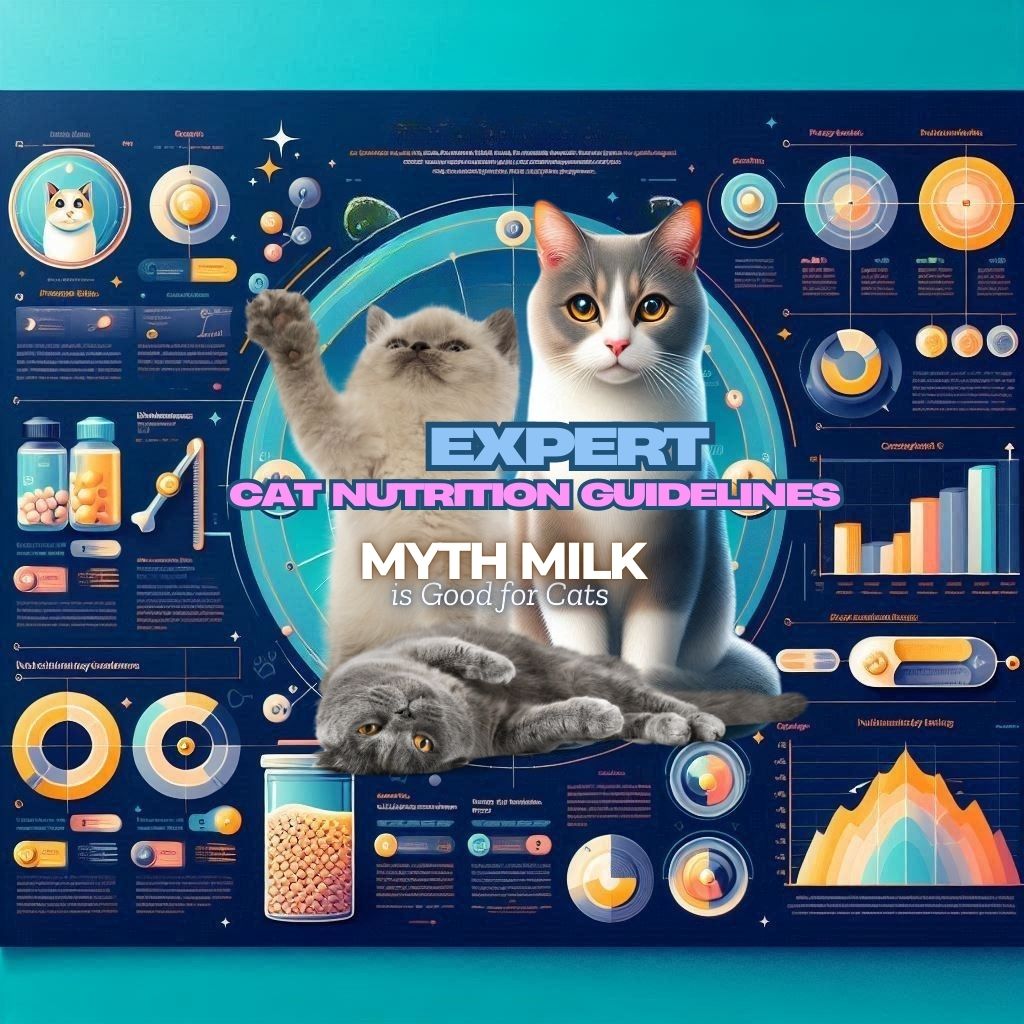
In addition to gastrointestinal symptoms, there is growing evidence that the regular consumption of milk may contribute to weight gain and obesity, further compounding health risks. Obesity in cats is linked to a host of secondary health issues, including joint problems, cardiovascular complications, and a decreased lifespan.
By presenting both quantitative research and qualitative experiences, this section aims to equip cat owners with the knowledge necessary to avoid potentially dangerous feeding practices. It is crucial to recognize that while milk may appear harmless, its effects on feline health are far from benign, and understanding these dangers is key to promoting long-term well-being in cats.
Exploring Dairy Alternatives:
Safe Options for Your Feline Friend.
Recognizing that many cat owners associate milk with comfort and care, this section explores dairy alternatives that are safe and beneficial for feline consumption. The first step in transitioning from traditional milk to safer alternatives is to understand the nutritional requirements of cats and identify products specifically formulated for them.
There are several lactose-free milk.
Substitutes available on the market are designed to cater to the dietary needs of cats, providing hydration and a source of protein without the risks associated with lactose. These dairy alternatives are often enriched with vitamins, minerals, and taurine, making them a healthier option compared to regular milk.
The text discusses the use of lactose-free formulas and natural alternatives like bone broths and diluted yogurt as occasional treats for cats. It emphasizes the importance of reading labels, understanding ingredient lists, and consulting a veterinarian for personalized recommendations. Comparative analyses of these dairy alternatives are presented, highlighting their nutritional profiles and benefits.

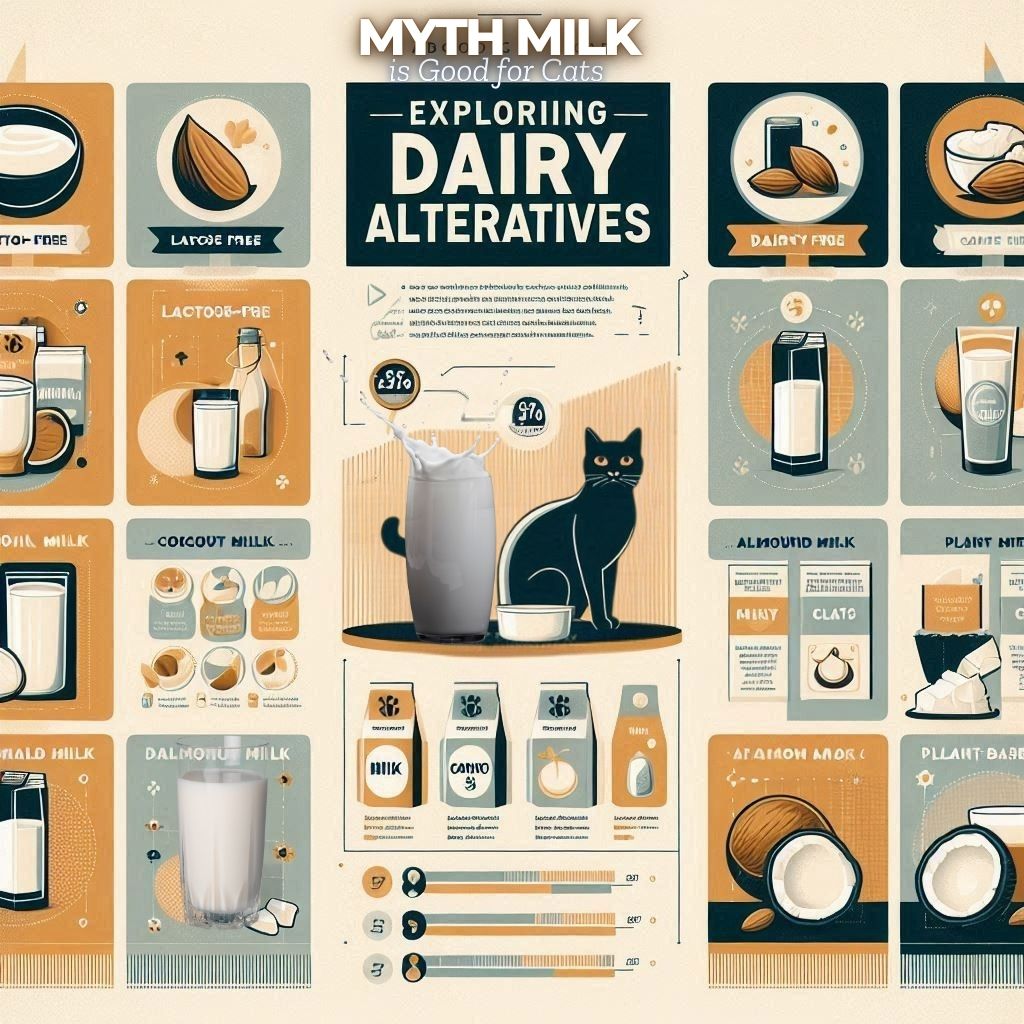
Expert opinions will shed light on why these alternatives are better suited for cats, emphasizing that they are formulated to avoid lactose while still providing essential nutrients. The section will also address potential concerns, such as flavor preferences and how to gradually introduce new products into a cat’s diet to ensure acceptance and avoid digestive upset. Case studies from pet nutrition experts will be included to illustrate successful transitions from regular milk to safe dairy alternatives, detailing improvements in digestive health and overall well-being.
Additionally, practical tips for home preparation of safe, cat-friendly beverages will be provided, offering cat owners the option to create their lactose-free treats using simple ingredients. By exploring these safe options, this section empowers cat owners to make informed decisions that prioritize their pet’s health while still providing a comforting treat that many cats enjoy. The ultimate goal is to debunk the myth that all milk is beneficial and to offer viable alternatives that support a balanced and nutritious feline diet.
Expert Cat Nutrition Guidelines:
Myth vs. Science in Dairy Consumption. In this final content section, we bring together expert insights and scientific research to compare popular myths with factual, evidence-based guidelines on dairy consumption in cats. Veterinarians and pet nutritionists have long debated the role of dairy in a cat’s diet, and the consensus among experts is that milk, in its traditional form, is not ideal for adult cats.
Cat nutrition guidelines
From historical practices to modern recommendations that prioritize animal protein and nutrient-rich diets tailored for feline health. We will examine common misconceptions about milk, discussing how cultural depictions and outdated advice have contributed to the persistence of the milk myth. Scientific studies that investigate the metabolic and digestive responses of cats to dairy consumption will be reviewed, providing a robust foundation for the arguments against feeding milk to cats.
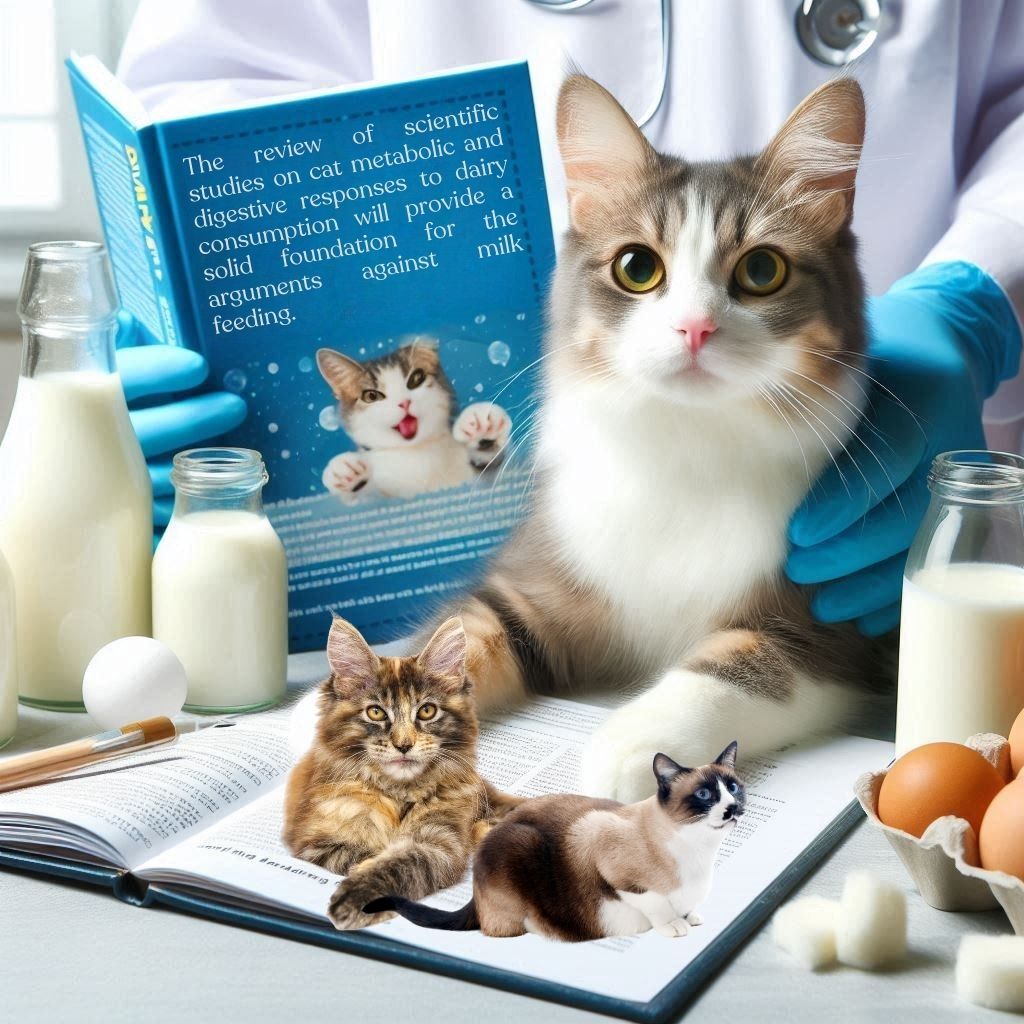
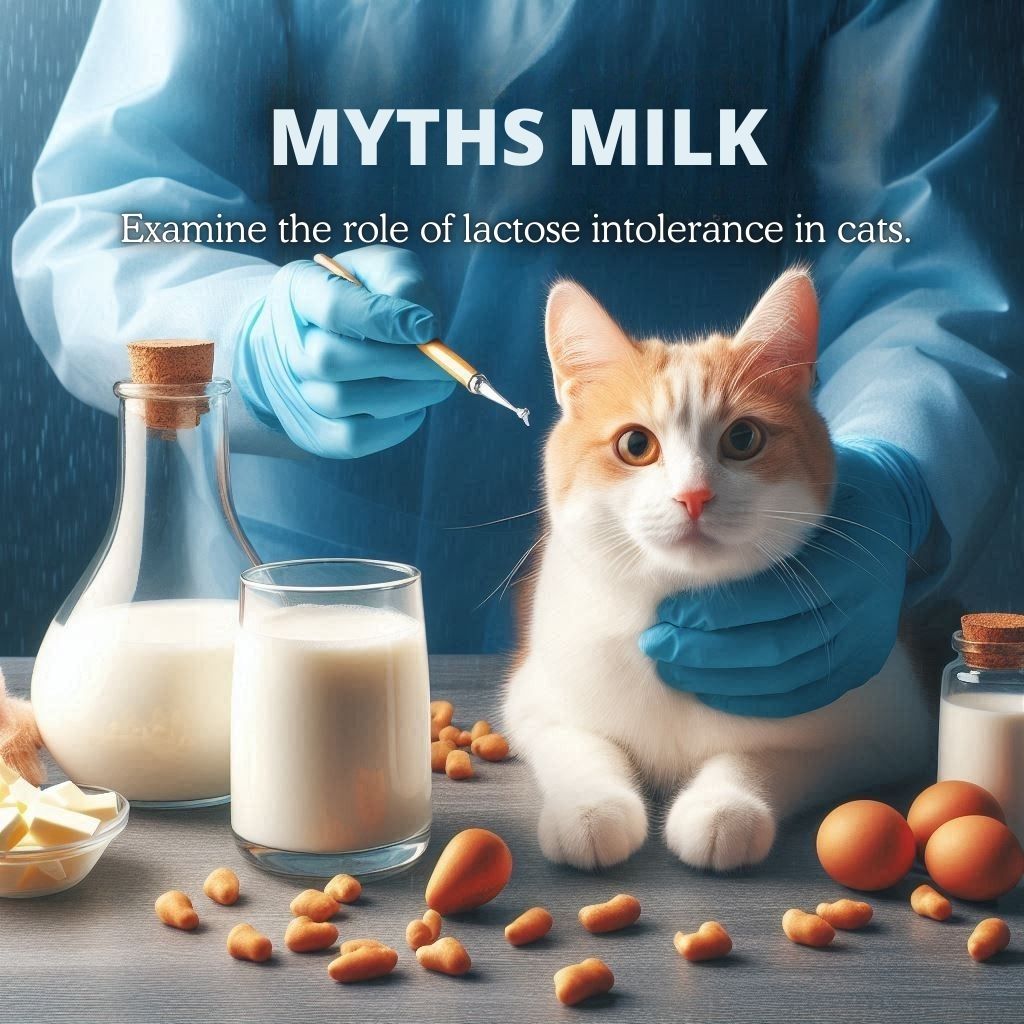
Expert interviews and quotes will be included to highlight the nuanced perspectives of leading veterinarians and nutrition specialists, reinforcing the importance of adhering to scientifically sound feeding practices. Detailed comparisons between the nutritional content of milk and specialized cat foods will illustrate why the latter are more effective in supporting a healthy feline metabolism.
The potential long-term
The discussion will also address the potential long-term impacts of dairy consumption on feline health, including risks related to obesity, digestive disorders, and nutrient deficiencies. By contrasting myth with science, this section aims to equip cat owners with the knowledge needed to make informed decisions and to move beyond popular but outdated beliefs about milk.
Creating a balanced diet
We will offer actionable guidelines for creating a balanced diet that minimizes risks and maximizes nutritional benefits, supported by real-world examples and case studies. The section concludes with a call to action for cat owners to consult with veterinary professionals when considering any changes to their pet’s diet, ensuring that every decision is backed by expert advice and current research.
Summary
In summary, the belief that milk is good for cats is false, as adult cats often cannot digest lactose, leading to digestive issues and health risks, with safer alternatives available.
Nutritional analysis showed that milk’s components, particularly high lactose, do not meet cats’ dietary needs for high protein and taurine. Feeding milk to cats poses health risks like digestive issues, obesity, and allergies, highlighting the dangers of this common misconception.
We offered practical advice by presenting safe dairy alternatives and expert nutrition guidelines, helping cat owners make informed dietary choices for their pet’s long-term health. The article aims to replace outdated beliefs with evidence-based insights, promoting a healthier, happier life for cats.
